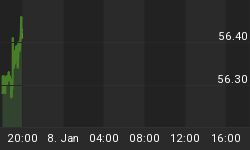James Bullard, President of the Fed's St. Louis Bank, is speaking in Prague today. According to Bloomberg:
He said four areas in particular are raising "macroeconomic uncertainty." These included turmoil in the Middle East and north Africa, the natural disaster in Japan, "the U.S. fiscal situation and the possibility of a government shutdown," and Europe's sovereign debt crisis.
Chairman Ben S. Bernanke has given no indication the central bank will deviate from its plan to buy bonds through June to spur economic growth and reduce 8.9 percent unemployment.
Since QE2 is due to end in June and given the "macroeconomic uncertainty" mentioned by Mr. Bullard, we continue to believe flexibility is required (see post) relative to the market's current advance. The monthly employment report will be released this Friday at 8:30 a.m. EDT - another reason to remain open-mined about both bullish and bearish outcomes.
As of Monday's close the S&P 500 Index has checked off 94% of the boxes on the what-you-would-expect-to-see-at-the-end-of-a-correction list. False turns are the exception, rather than the rule, so we will continue to give the bull market the benefit of the doubt until we see evidence to the contrary.
The CCM 80-20 Correction Index closed Monday at 1,167. As shown via the table below, this 80-20 level corresponds to favorable risk-reward outcomes from a historical perspective.

A risk-reward ratio of 1.00 represents a situation where the upside and downside for a given market are equal. Higher risk-reward ratios are more favorable. The table below takes a closer look at the S&P 500's current profile. The ratios near the bottom of the table show the average and median risk-reward ratios - the current ratios are shown in the colored boxes above. If we look out six weeks to a year, the market's current risk-reward profile from an historical perspective is very favorable.

















